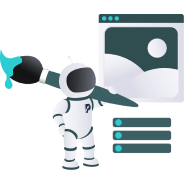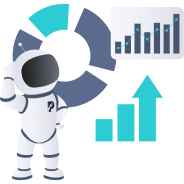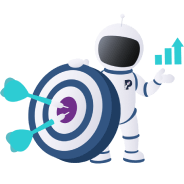7 Technical SEO Practices for AI-First Indexing
Traditionally, search engines have indexed and ranked web pages based on simple signals like keywords, page speed, link structure, and metadata. Recently, we’ve come a very long way.
Despite mixed sentiments about AI, we’re finding ourselves in an AI-first era. People are using AI to write school essays, plan meal prep, build websites, create artwork, and many other bizarre and innovative pursuits.
Search engines are no different. Instead of matching search queries to keywords, search engines are using AI models to interpret our searches and generate answers accordingly. This is a fundamental shift in how content is understood and organised. However, with models capable of understanding and synthesising information to this degree, users often aren’t being sent to websites at all.
Many people are unhappy about this. AI-first indexing causes frustration among creators who want ownership of their work; we’re overriding authentic human perspectives in favour of faster answers. AI-first indexing also poses new challenges for businesses that rely on organic search. Your long-held SEO strategies might suddenly feel outdated.
This article will explore technical SEO best practices in light of this significant change. Despite the varied feelings about AI-first indexing, we can decide to adapt our SEO strategies to give us the best chance at visibility and authority.
Let’s dive in:
What does AI-first indexing mean for your business?
SEO has been relatively predictable for years because of the rules we knew search engines followed. We could rely on them to respond to on-page SEO factors like putting the right keywords in the right places, having backlinks from other sites that acted as a vote of confidence, and anything that helped human visitors find valuable and relevant content.
Equipped with these best practices, businesses have been building authority over time, but AI-first indexing changes the game in several key ways. For instance:
- AI models can understand the meanings behind words and interpret nuance, tone, and context.
- Search engines can pull information from multiple sources to produce summaries at the top of the results page.
- AI can tailor results to the query and the user’s intent and past behaviour.
These changes pose several challenges for businesses that rely on organic search. If AI answers a user’s question directly, they may never reach your site. Plus, the previous demand for highly trustworthy and original sources has become stricter, making it much harder for your content to be referenced.
For businesses to adapt to AI-first indexing, they’ll have to focus on depth, originality, and expertise. In addition, they’ll do well to build brand recognition outside of search (with methods like email, social media, and partnerships) and use formats that are harder for AI to replace (such as thought leadership, case studies, communities, and experiential content).
7 technical SEO practices for AI-first indexing
In terms of technical SEO, there are several things you can do to adapt to AI-first indexing. Let’s explore them now:
1. Optimise for semantic search
Semantic search is the new way search engines understand queries from users. Instead of matching web pages to keywords, semantic search understands meaning and intent. It does this with machine learning and natural language processing, which are subsets of AI.
AI-indexing isn’t all bad; semantic search could provide you with more natural opportunities to be discovered by users. For example, Google states that even if a clothing company’s product description for gloves doesn’t mention the word ‘warm’, it could recommend their gloves to users searching for ‘warm gloves’ based on the fact that they’re made of fleece or wool.
Your technical SEO can rise to meet semantic search in a few ways:
- You should use internal linking to make it easy for Google to crawl your site and recognise the semantic relationships between your pages (i.e., topic clusters, pillar content).
- Ensure your headings and page structure mirror the natural language used by search engine users. Headings should also follow the flow of information that’s logical to the topic.
- Continue to avoid keyword stuffing, focus on natural language, and include concepts related to your topic (latent semantic indexing).
2. Use structured data (schema markup) strategically
Structured data is a standardised way of labelling your content so that search engines understand what it means. This essential context gives search engines a clear understanding of your content’s purpose, entities, relationships, and hierarchy beyond what’s visible on the page.
Structured data is written in a format like JSON-LD and added to your HTML to help define things like what your page is about (an article, a product, an event), who created it (a person or brand), and how the parts relate to each other (e.g. a product reviewed by a user). This is done using vocabularies like schema.org, which is supported by major search engines.
By helping AI to index your site correctly, you allow it to do what it’s built for. For example, instead of understanding ‘this blog mentions technical SEO 5 times’, it knows ‘this article discusses technical SEO best practices for businesses challenged by AI-indexing’.
You should implement schema.org types like Article, FAQPage, Product, Event, and HowTo to make your intent for web pages super clear. You can also use nested schema markup to help AI grasp how elements of your content fit together. To validate your markup, you can use Google’s Rich Results Test to check for errors, optional improvements, and eligibility for featured snippets and AI summaries.
3. Prioritise page speed and other vitals
Page speed has been important to search engines for a long time, and that hasn’t changed with AI indexing. AI pays attention to the experience users are having on websites. If they’re slow, they’re just not going to have a good chance of being ranked highly.
Page speed can be deconstructed into a few different aspects:
- Largest Contentful Paint (LCP) is how long it takes for the main part of your page to show up. You should aim for this to be under 2.5 seconds.
- First Input Delay (FID) is how quickly your site reacts when someone tries to click something. This should ideally be under 100 milliseconds.
- Cumulative Layout Shift (CLS) should also be under 100 milliseconds. This is how much things move around while the page is loading.
You can improve these vitals by compressing images, using lazy loading, and using a Content Delivery Network (CDN). You can also clean up your site by removing old styling or unused scripts, so browsers don’t waste time loading unnecessary CSS or JavaScript.
4. Ensure your content is indexable and crawlable
AI won’t be able to read your web pages if your content is blocked, hidden, or unreadable. It’s surprising how much content online cannot be crawled effectively by search engine bots. To ensure yours is easy to index, consider doing the following:
- Avoid hiding content behind complicated code. For, if your site relies too heavily on JavaScript, it can render too slowly and hide key content from crawlers.
- Check you’re not accidentally blocking crawlers from your web pages. You might be implementing robots.txt or noindex tags.
- Submitting a sitemap.xml to Google Search Console helps bots know exactly how to read your website pages.
5. Make your content readable for machines
For a long time, there has been an emphasis on ensuring your content is catered to people. While this is still the case, there’s now the extra requirement of your content being readable for machines. This is the only way search engines will be able to understand and summarise, your content, as well as turn it into answers and AI-generated results.
There are a few ways you can ensure your content is readable for machines:
- Clean, consistent formatting helps them extract your message accurately. Use proper heading tags (<h1>, <h2>, etc.) to structure your content logically.
- Your content must be written in real text (HTML) instead of text images. Pay special attention to making text included in images accessible, as this will be missed by AI.
- Use lists, tables, and short paragraphs to help AI digest your content easily.
Much of this advice complements efforts to cater to human visitors, so you won’t be choosing one over the other.
6. Maintain clean and canonical URL structures
URLs are very important to search engines and AI models. They explain how your website is organised, and which pages are the most important. If your URL structure is messy or confusing, your content might be misunderstood and harder to for AI models to trust.
To maintain a clean structure, you should use canonical tags to show the ‘main’ version of a web page that search engines should index. You should also avoid duplicate content (like when websites spread a single blog post over several pages, duplicate pages for printing purposes, or misuse product filters).
Finally, you should use consistent URL paths that reflect your website hierarchy and semantic meanings. For example, /blog/seo/best-practices instead of /123/?id=98&ref=seo-article.
7. Monitor and fix crawl errors quickly
Broken links, redirect chains, or server errors can interrupt the crawling process, make it much harder for your content to be understood, and degrade your credibility. You should regularly check for crawl errors, such as:
- Checking audit crawl reports in Search Console and log files regularly.
- Fix 404 errors or set up redirects to relevant pages. Too many of these can waste bots’ crawl budgets. (Be careful you don’t have any redirect loops.)
- Check-in with your website’s mobile usability and responsiveness. Mobile-first crawling should be a priority as this is Google’s predominant method.
Final thoughts
Many aspects of technical SEO for AI-first indexing aren’t dissimilar to those we’ve striven for before. Page speed, clarity, structure, and internal linking aren’t new concepts. However, the way AI models are changing how search engines crawl web pages must be understood for businesses to have a strong grasp of their strategies.
If you need some assistance with your technical efforts or any part of your SEO strategy, reach out to us here at purpleplanet. We offer a range of services:









